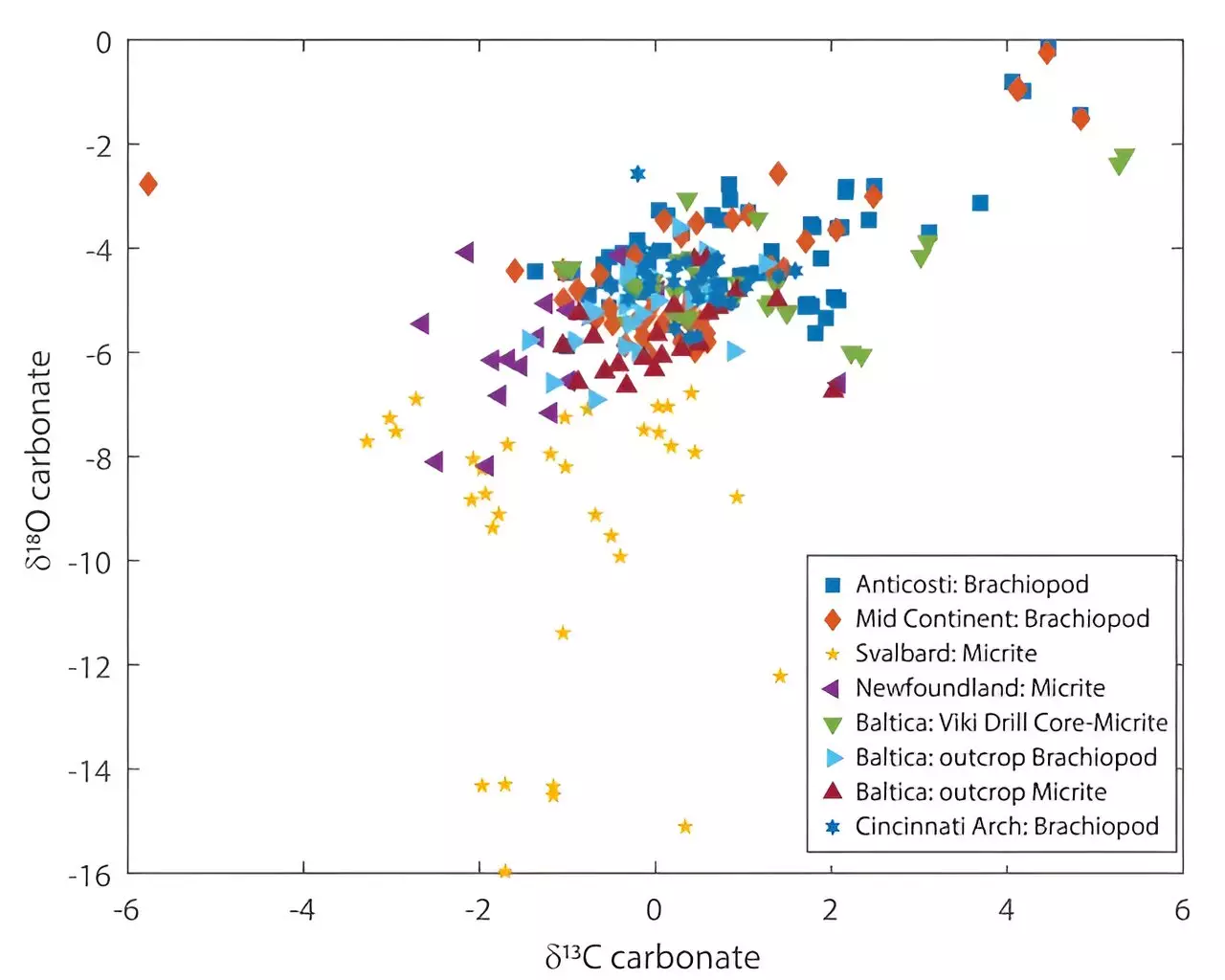Oxygen isotopes, particularly the ratios of ^16O to ^18O (denoted as Δ^18O), play a crucial role in reconstructing the Earth’s climatic history. An international team of marine scientists recently posited that these ratios have undergone gradual alterations over the last 540 million years. These fluctuations are not just mere academic curiosities; they have profound implications for understanding ancient ocean temperatures, sea-level changes, and even the evolution of marine life itself. The research published in the Proceedings of the National Academy of Sciences shines a light on a contentious area of study that has prompted heated discussions among earth scientists.
To delve into this complex question, researchers focused on rocks from the Ordovician period, a pivotal era that spans from approximately 485 to 443 million years ago. Historical debates have polarized scientists; some are inclined to believe the Δ^18O ratio has remained static, while others argue for its incremental rise. The current study contributes new evidence to support the latter proposition. Why is this significant? Understanding changes in the oxygen isotope ratio aids in reconstructing past climates, thereby enhancing predictions about ocean conditions during key geological epochs.
The methodology employed in this investigation is as fascinating as its implications. By examining drill cores from Estonia’s Baltic basin and surface rock samples, the research team utilized clumped isotope thermometry—a sophisticated technique that assesses the relationship between carbon and oxygen isotopes in carbonates. The binding of carbon isotopes to oxygen isotopes is temperature-dependent. Consequently, the resulting measurements revealed that during the Ordovician, seawater temperatures were cooler and the Δ^18O values lower than previously assumed. Such findings are groundbreaking as they indicate a slow but discernible shift in the oxygen isotope ratio over immense time scales.
While the researchers assert that their findings bolster the theory of a changing Δ^18O ratio, they also caution that their results are not irrefutable evidence. Scientific inquiry is inherently iterative, and as such, ongoing research is imperative for resolving the controversies surrounding these isotope ratios. Understanding the underlying mechanisms that could drive these changes is vital. The team suggests that hydrothermal alterations—caused by heated water interacting with specific rock formations—are primary drivers of this isotopic evolution. The potential role of continental weathering adds another layer of complexity to this intricate puzzle.
The ongoing investigation into the variations of the oxygen isotope ratio in seawater over geological time provides vital insights into the history of Earth’s climate. As the scientific community continues to grapple with these findings, future research will be essential for deepening our understanding of oceanic conditions in the distant past. The quest for clarity in this isotopic debate is not only a journey through Earth’s history but also a compelling reminder of how intertwined our understanding of climate, geology, and oceanography truly is.


Leave a Reply